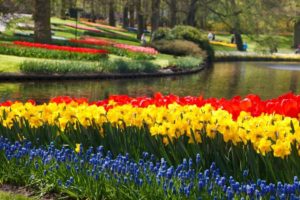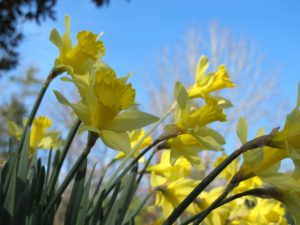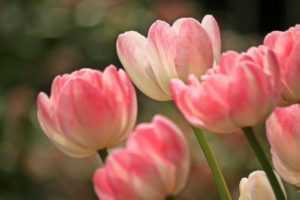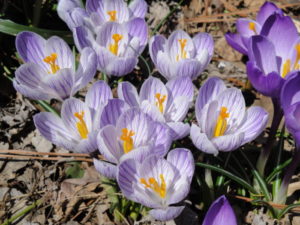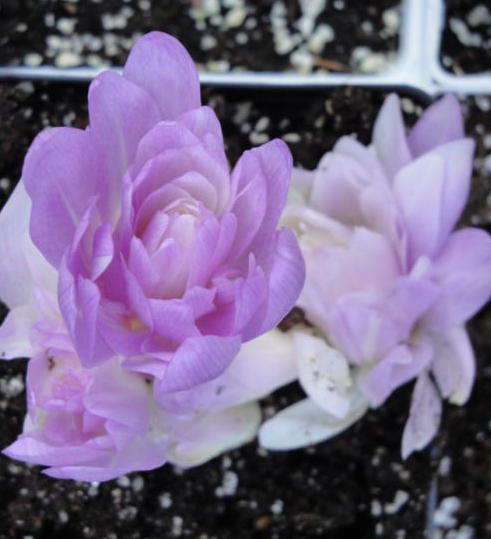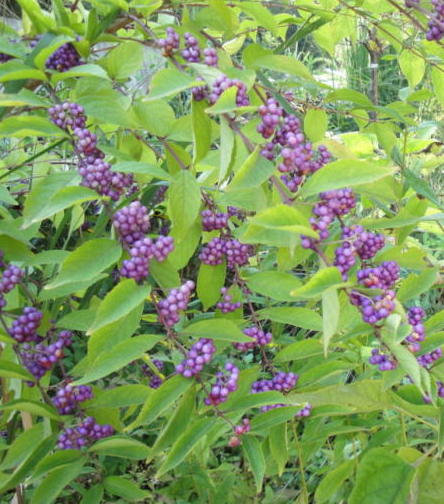2018
Time For Spring-Flowering Bulbs
In a few days, we finally will see some almost normal temperatures in this part of the southeast. It’s time to think about spring-flowering bulbs that will be planted over the next 2 or 3 months. Get comfortable; this is a long essay on the big topic of spring-flowering bulbs.
It often happens: when the daffodils, tulips, and wonderfully fragrant hyacinths bloom in February, March, and April, that’s when many customers ask for the bulbs. But most bulbs are planted in the fall and into early winter. Their roots develop as the soil cools in late summer and autumn, but growth above ground is delayed until months later.
It is no longer uncommon for garden centers to sell potted bulbs in spring. So, if you missed out on the fall planting season, or if you want to see the flower colors before planting, inquire with the growers. Vendors at spring home and garden shows and farmers’ markets also sell pots of budded or blooming bulbs.
Many thousands of varieties of bulbs are available to gardeners. Each region of the country has its favorites, based on ease of culture, resistance to hungry animals, and familiarity with what people “usually” grow there.
If you want something more unusual but your local sources don’t carry it, you can probably find it online or through mail order catalogs. Find out what the bulbs require before investing in 2,000 pink tulips that can’t take the heat in your back yard.
On the Subject of Tulips
Large-flowering hybrid tulips grow in the cooler northern half of the United States, down to Zone 7. A few will perennialize in slightly warmer climates. The smaller species tulips will grow a bit farther into the South.
Tulip bulbs planted among the roots of trees and shrubs might work slightly better than those in open beds. The soil there is somewhat cooler and dryer. They’re not fond of warm temperatures and high moisture levels.
Many gardeners here in the piedmont of North Carolina plant tulips with the expectation of only one glorious show, and then tear them out when flowers fade. Beautiful as they are, tulips in zone 8 or warmer usually do not come back for an encore performance the next year. Even zone 7 is a challenge for them.
And that’s okay with a lot of people, including designers of public parks and municipal common spaces. But, wow, what a show...if you can keep the deer and rabbits away from them! They are especially fond of tulips, and I highly recommended using deer repellents. When using a solution in a sprayer, set the nozzle to a fine mist. A coarse droplet will simply bead off the waxy foliage and flowers without sticking.
Voles, too, eat tulip bulbs. Planting tulips with PermaTill (small, expanded gravel used for drainage) around them usually deters the voles. Stainless steel mesh planting baskets will exclude burrowing animals from the root zone. And squirrels have been known to do a little transplanting of their own. Products are available to help prevent these problems.
How Bulbs Work
A bulb is a shortened stem, with roots that emerge from the basal plate when the temperature cools in the fall. The basal plate, clearly visible on hyacinths, is a rounded disc of tissue at the bottom of the bulb. Tightly folded undeveloped leaves surrounding the flower shoot contain food for the plant during dormancy. A bulb has all the parts necessary to complete its life cycle: root initials in the basal plate, a growing tip, leaves, stems, and flowers.
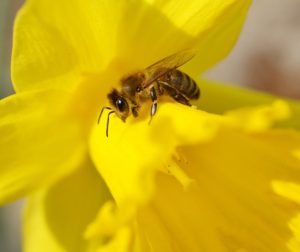 The rooting bulbs remain safely tucked underground until the soil begins to warm up in spring. That signals the plants to burst from the ground with their beautiful, cheerful flowers. We bid another winter adieu! Hungry bees and other pollinators emerging on warm spring days feed on pollen and nectar from spring-flowering bulbs, when little else is in bloom.
The rooting bulbs remain safely tucked underground until the soil begins to warm up in spring. That signals the plants to burst from the ground with their beautiful, cheerful flowers. We bid another winter adieu! Hungry bees and other pollinators emerging on warm spring days feed on pollen and nectar from spring-flowering bulbs, when little else is in bloom.
The foliage must be given enough time to photosynthesize and to store carbohydrates in the bulbs. This food will sustain the plant during dormancy, and ensure that more buds will develop for next year’s flowers. So, after the flowers finish up, let the plants wither naturally. Foliage can be removed after at least half of it has yellowed.
First, a few words on summer- and fall-blooming bulbs
Garden centers stock most of the summer-blooming bulbs in spring to early summer. You can find bulbs, corms, tubers, and rhizomes of lilies, gladiolus, canna, caladium, iris, and calla at that time of the year. Nurseries also offer potted specimens as they come into growth.
Elephant Ears
For dramatic foliage plants, look for elephant ears (Alocasia and Colocasia spp.), which grow only a foot tall to over 6′ tall. These are tropical plants and will die with frost, unless the tubers are dug and stored over winter. Planted in the ground in regions where frost doesn’t penetrate the soil, they usually survive the winter.
Caladium
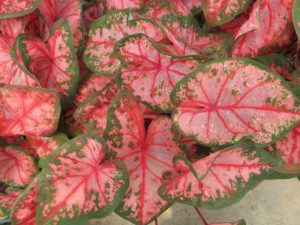
Caladium, in late spring.
The colorful caladiums are tropical and need warmer soil temperatures in winter in order to survive, even when dormant. Some gardeners dig up and save the tubers every year, but most purchase new tubers or potted plants in spring to mid summer.
Foliage colors include green, white, chartreuse, pink, peach, and red, and can be mottled, edged in a contrasting color, streaked, or spotted. Their spathe-like flowers are not showy and usually removed.
For the past four years, I’ve kept a large Italian terra cotta pot outdoors in the summer. It contains a white caladium, a few kinds of brake (Pteris) ferns, and trailing clumps of Pilea ‘Aquamarine’, with its reddish stems and incredible pewter-blue, rounded leaves. It’s also home to whatever else dropped in. This year: some bulbs of tender Ledebouria socialis (leopard lily), a miniature African violet, and Dendrobium kingianum, a small orchid that has lived in a 3″ clay pot for over 4 decades.
Dormant Caladium
When the weather cools, the whole pot comes indoors to the sunny kitchen, where the caladium goes dormant. One by one, the leaves turn yellow, and the caladium sleeps through the winter. At average indoor temperatures, it remains dormant.
Instead of digging out the tubers, I leave them in the soil, caring for the rest of the plants as needed. Every couple of years, some potting soil is added under the plants, and the pot goes outdoors to light shade. And each year, the caladium comes back after about a month of warm weather. It’s a heavy feeder, so fertilize caladium every 2-3 weeks while it’s in leaf.
Dormant caladium tubers that remain surrounded by soil over the winter are more likely to return the next year than dry, loose tubers kept in a bag. Keep them dry if by themselves in a pot; damp is okay, if in company with other plants.
Amaryllis
Amaryllis (photo, above) is a beautiful late fall to spring flowering plant. Dormant bulbs can be found at garden centers at this time of year, alongside the spring-flowering bulbs. Potted in the fall, Amaryllis bulbs begin blooming indoors around the holidays.
Colchicum Autumnale
- Colchicum ‘Waterlily’, nice with….
- …purple beautyberry, Callicarpa americana.
This is one of my favorites partly because the plant is animal-proof and partly because it blooms in the fall. Sometimes slugs can be a problem. Scattering Sluggo granules near the Colchicum will take care of that.
The bulbs will appear in some, but not many, garden centers, along with the daffodils and other spring-flowering bulbs. Left on a windowsill, the bulb produces flowers with no encouragement necessary! But I prefer to plant these hardy bulbs in the garden. Colchicum is the source of a potentially toxic pharmaceutical component, so grow with care.
Only the flowers make an appearance in autumn; colchicum foliage arrives in spring and lasts a short period of time.
Placed near a shrub called Purple Beautyberry (Callicarpa dichotoma or C. americana), the Colchicum ‘Waterlily’ flowers perfectly echo the color of the shrub’s berries (photo, above).
Once planted, they soon begin blooming in white (‘Alba’) and shades of lavender-pink. ‘Waterlily’, available from Wayside Gardens, has many petals, pale in color until exposed to light. It has the appearance of a water lily, but it is not an aquatic plant. After 2 years in the ground, one bulb will produce dozens of flowers. This plant is sometimes called “fall crocus”, but it is not to be confused with…
…Fall Crocus
A few hardy crocuses bloom in the fall. One is saffron crocus, Crocus sativus, which gives us our most expensive spice, harvested from the female flower part, the red style and stigma. Only 3 threads of saffron are laboriously harvested from each flower, explaining its very high cost. Incidentally, saffron has been used as a spice for 3500 years. And for more trivia–saffron crocus is a sterile triploid whose ancestry is open to speculation.
There are other bluish (C. speciosus ‘Cartwrightianus’) and white (C. kotschyanus) fall crocuses available. The lavender-blue color positively glows in the setting sun. This color is rare in the garden at this time of the year, and a welcome surprise when the flowers emerge through the Liriope and other short groundcovers.
Crocus, technically, grows from a corm, but, for simplicity, is often called a bulb.
Headings
Page 1: Time For Spring Flowering Bulbs, On the Subject of Tulips, How Bulbs Work, and First, a few words on summer- and fall-blooming bulbs (Elephant Ears, Caladium, Amaryllis, Colchicum Autumnale, Fall Crocus)
Page 2: Color Effects, Formal and Informal, Naturalizing in Lawns, Naturalizing in Meadows, If You’re New To Spring-Flowering Bulbs, When Planting Drifts of Bulbs (Microclimates and Timing, Laying Out the Beds), and Aftercare
Page 3: Galanthus, Crocus (Snow Crocus, Giant Dutch Crocus), Eranthis, Muscari, and Puschkinia
Page 4: Hyacinthoides, Tulipa (Tulips In Zones 7 and South, Species Tulips), Hyacinthus, Narcissus (Buying Daffodil Bulbs, Linnaeus, the RHS, and the ADS, Planting Daffodils, Fragrant Daffodils), and Allium
Page 5: Maintenance, Tricks to Hide Maturing Foliage, Stinzenplanten, Forcing Spring-Flowering Bulbs, Rock Gardens, and Don’t Overlook the Little Ones
